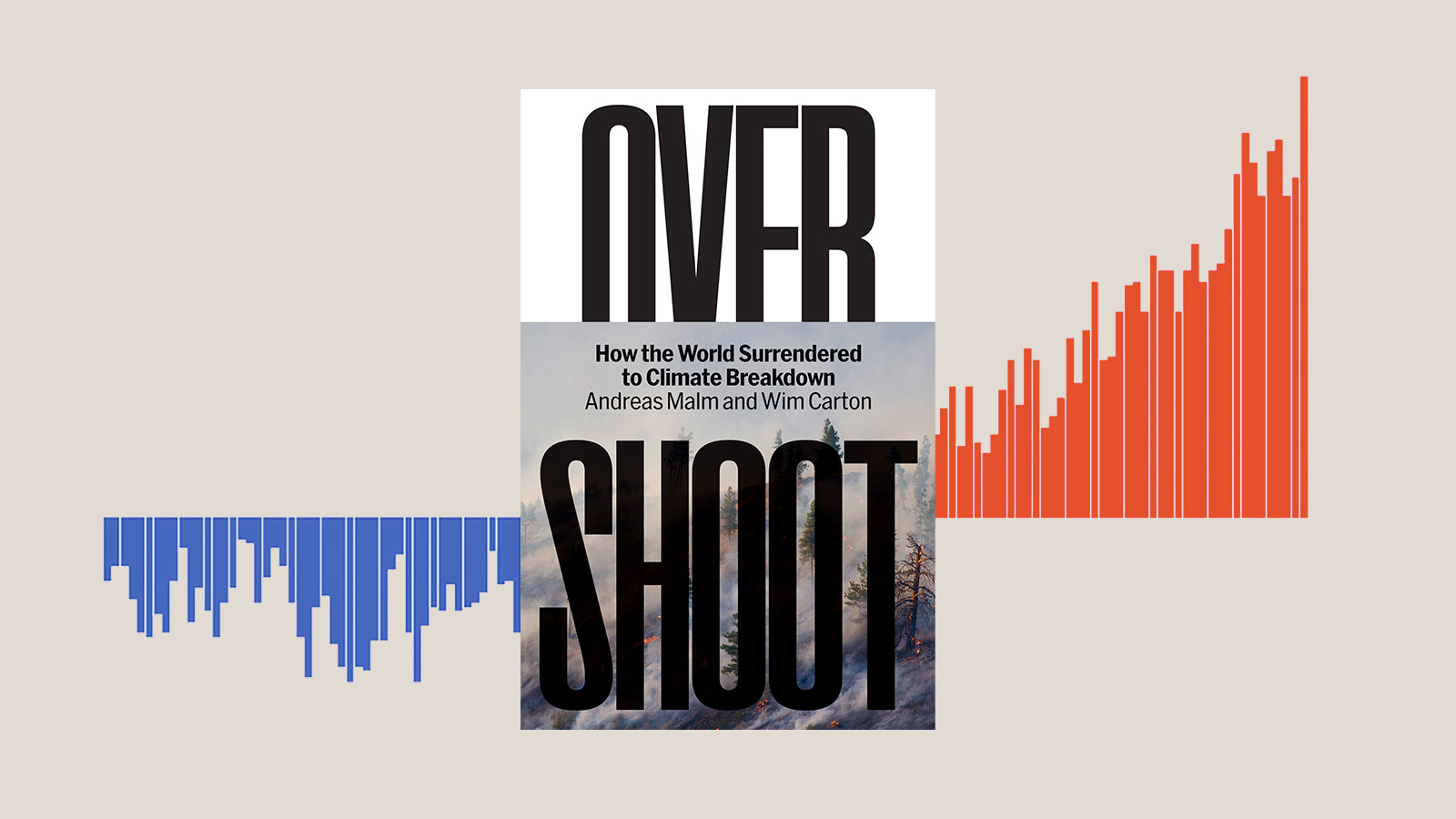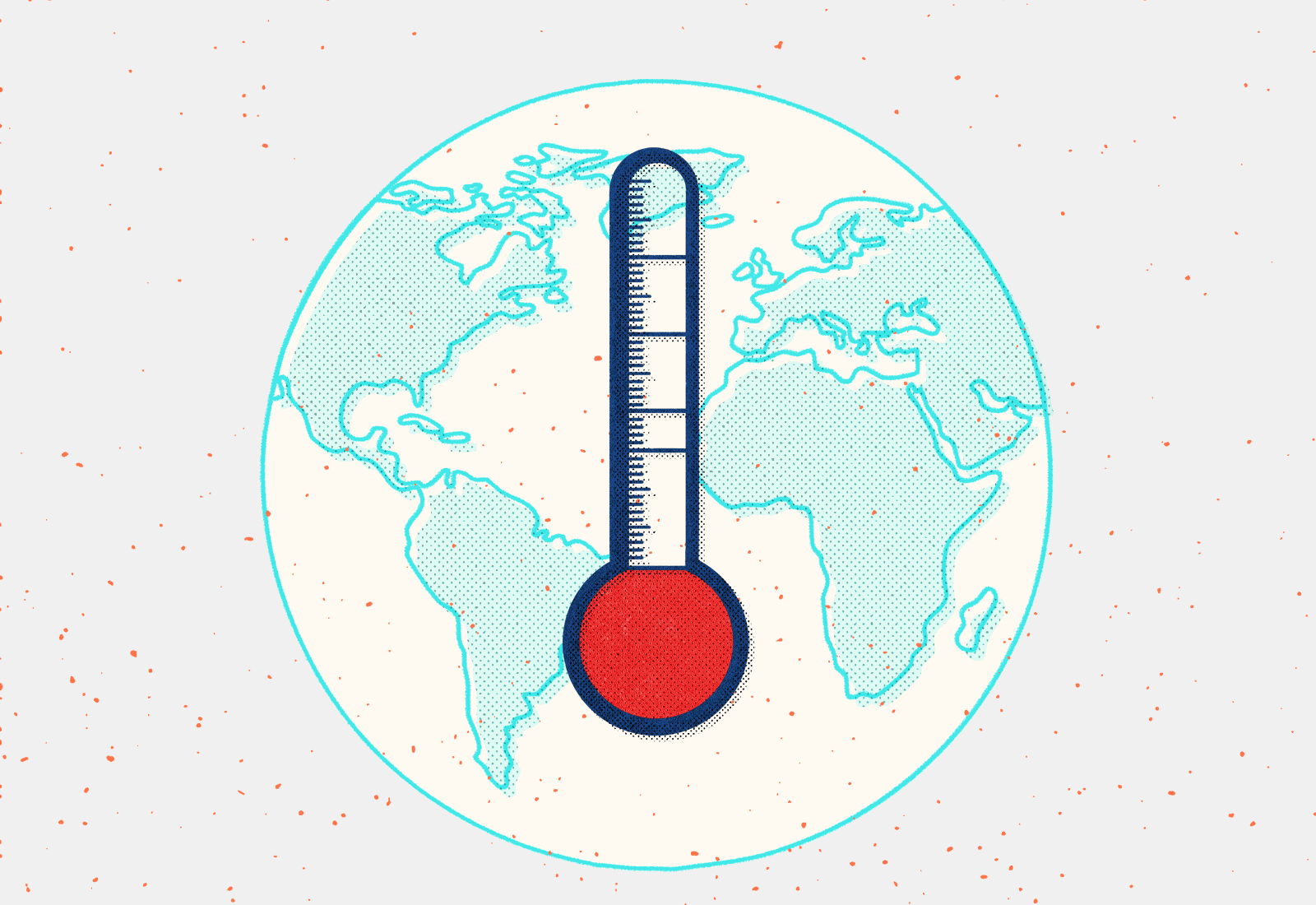When, at the annual United Nations climate conference in Paris in 2015, the countries of the world agreed to the goal of limiting global temperature increase to 1.5 degrees Celsius above pre-industrial levels, it seemed possible, probable even, that humanity was on track to avoid the worst effects of climate change. This new target was even more stringent than the one proposed seven years prior in Kyoto, reflecting advancements in scientific research and policymakers’ willingness to meet the urgency of the moment. Champions of the Paris Agreement, as it was called, included both the world’s mega-emitters like the United States and China and the small island nations most vulnerable to sea level rise.
“Today, the world meets the moment,” former President Barack Obama said in a speech in the Rose Garden on the date that the Agreement officially took effect. “And if we follow through on the commitments that this agreement embodies, history may well judge it as a turning point for our planet.”
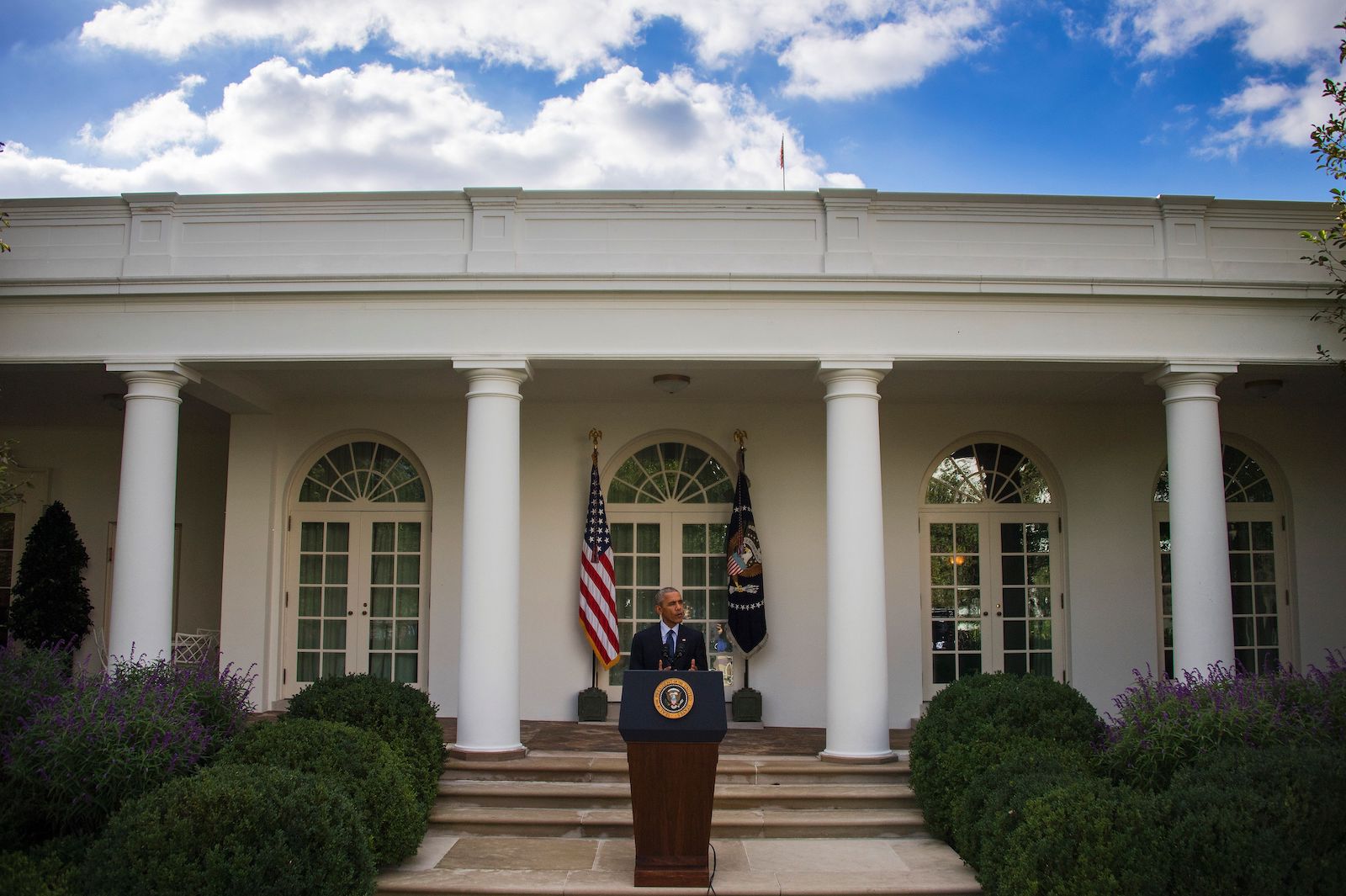
Jim Watson / AFP via Getty Images
Nearly a decade later, the Paris conference can hardly be called a turning point. Fossil fuel emissions have continued to rise steadily, dipping slightly during the COVID-19 pandemic in 2020 only to tick upwards again. Despite scientists’ widely accepted determination that no new fossil fuel projects can be greenlit if the world is to meet the 1.5 degree target, oil and gas companies have spent the last few years on a building frenzy, erecting new gas pipelines and drill sites from Mozambique to the Permian Basin. All the while, with deadly heat waves across Europe, drought in East Africa, and ever-worsening hurricanes in the Gulf of Mexico, the effects of climate change have come into sharper focus. What could explain the discord between the stated goals of the Paris Agreement and the economy’s trajectory since?
In their new book Overshoot: How the World Surrendered to Climate Breakdown, Wim Carton and Andreas Malm argue that the answer lies in the titular ideology of “overshoot,” which accepts that officially declared limits to global warming will be exceeded before technological innovations return temperatures to where they should be. This mode of thinking — really, an enticement to not think critically — they write, entered mainstream climate policy around the time of the Paris Agreement and flourished in part due to the widely celebrated treaty’s flimsy terms. The result: business as usual. Oil majors have since raked in record profits as the world heats up.
“Overshoot is here not a fate passively acquiesced to,” Carton and Malm, both professors at Lund University in Sweden, write in the book’s introduction. “It is an actively championed programme for how to deal with the rush into catastrophe: let it continue for the time being, and then we shall sort things out towards the end of this century.”
Carton and Malm’s book, the first installment in a two-part series, is at once a detailed historiography, recounting the origins and development of the overshoot ideology, and a sweeping treatise on the political economy of late capitalism, using Marxist theory to argue that the very nature of the global economic system prizes fossil fuels over renewables.
The power of the book lies in its ability to name, at times with startling detail, the features of a logic that has affected all who work on climate change, from policymakers to journalists to academics to clean energy funders. Carton and Malm’s assertion that defeating overshoot requires confronting the churn of capitalist accumulation may frustrate those uninterested in considering the prospects of global revolution; however, the book offers valuable insights to sharpen any analysis of “how we got here.” It also has force as an intervention: If, according to overshoot’s own logic, we are to broadly deploy solutions in the coming years, then, Carton and Malm teach us, we must also consider those that may be branded “anti-capitalist.”
One of the first examples of overshoot thinking in the mainstream was an influential 1991 paper by the economist William Nordhaus, referred to by Carton and Malm as “the Genghis Khan of bourgeois climate economics.” The article, titled “To Slow or Not to Slow: The Economics of the Greenhouse Effect,” asked what an optimal economic policy would be for dealing with climate change. Nordhaus concluded that a rapid transition away from fossil fuels would carry a steep cost for the economy and that the task should be put off for future generations. Fossil fuels will help the world develop faster, he reasoned, making societies richer and better equipped to deal with climate fallout. (Despite experts flagging a number of errors with this logic, Nordhaus won a Nobel Prize for his life’s work in 2018.)
Carton and Malm write that the idea of overshoot really picked up steam after the signing of the 1997 Kyoto Protocol. The treaty set the limit to global warming at 2 degrees Celsius above pre-industrial levels, but the European Union was unsure of what measures it should take to actually achieve that goal (the U.S. did not ratify the treaty, considering it too stringent). To answer this question, researchers began developing a set of computer models that integrated biophysical systems with basic economics to chart different paths towards 2 degrees.

Steve Russell / Toronto Star via Getty Images
Like all predictive models, these relied on a set of assumptions, such as the rational behavior of investors. Their results provided policymakers with rosy predictions about humanity’s ability to continue releasing fossil fuels and still meet internationally agreed-upon climate targets. The introduction of carbon capture and storage technology in the models supercharged their popularity. Suddenly, it became possible to simply subtract a massive amount of carbon dioxide from the computer-generated atmosphere with a few simple keystrokes. The assumed future success of CCS technology — which is still not proven to work at scale — wiped away the hassle of having to rapidly build out renewable energy infrastructure. The additional emissions from fossil fuel use could conveniently be deleted later.
A group of Dutch researchers incorporated this strategy into an influential model with the acronym IMAGE to demonstrate how the world might achieve a “maximum” emission reduction, in line with the 2 degree warming threshold. Results in hand, they returned “to the EU and other governments with an astonishing finding: even very low limits are eminently feasible,” Carton and Malm write. “You just have to give yourself the freedom to first go beyond them.”
All of these models, however, omitted certain data points, like the thawing of the permafrost and large-scale climate migration. There is such a thing as too late. A new study published in the scientific journal Nature found that humanity’s ability to decrease the earth’s temperature after overshoot is not guaranteed. “Only rapid near-term emission reductions are effective in reducing climate risks,” the authors write.
Carton and Malm are not the first to identify limitations with these modeled predictions, whose promise underlies everything from the Intergovernmental Panel on Climate Change’s annual reports to the logic of the Biden administration’s Inflation Reduction Act. A body of criticism has identified integrated climate models as “grossly misleading” and suffering from a “lack of transparency” and “inappropriate input assumptions.” What the authors offer is a connection between the models’ evident limitations and the rise of the overshoot ideology.
Indeed, Carton and Malm argue, as the integrated models gained momentum, it became more possible for countries like the U.S. to sign on to more stringent climate targets — as long as they didn’t have to commit to immediately slashing emissions. In the late 2000s, small island nations like the Maldives and the Marshall Islands began pushing hard for a sharpening of the 2 degree target from Kyoto, arguing that level of warming would send much of their territory underwater. Their goal was a target of 1.5 degrees Celsius, with legal requirements that heavy emitters slash emissions by certain dates. What they got was meaningfully different: a tightened warming standard, but without emissions caps or quotas or any obligation beyond reporting back on their climate progress every five years.
“If there was equality in Paris, it came in the form of a shared unaccountability: The agreement required that no one was required to act at any certain level,” Carton and Malm write. “Now what do you get when a seemingly strict target is combined with such lax rules? You get overshoot.”
Among the outcomes of the Paris climate conference was the directive that the IPCC develop a report outlining the climate impacts of warming past 1.5 degrees. The Special Report on Global Warming of 1.5 °C, published in October of 2018, contained sobering depictions of a world thrust into the pits of climate disaster: widespread crop failures, water scarcity, deadly heat waves, and the spread of viruses from animals to humans. Preventing these outcomes, the panel wrote, would require “systems transitions” of an “unprecedented” scale, including “effective planning” in urban areas and “a marked shift in investment patterns.”
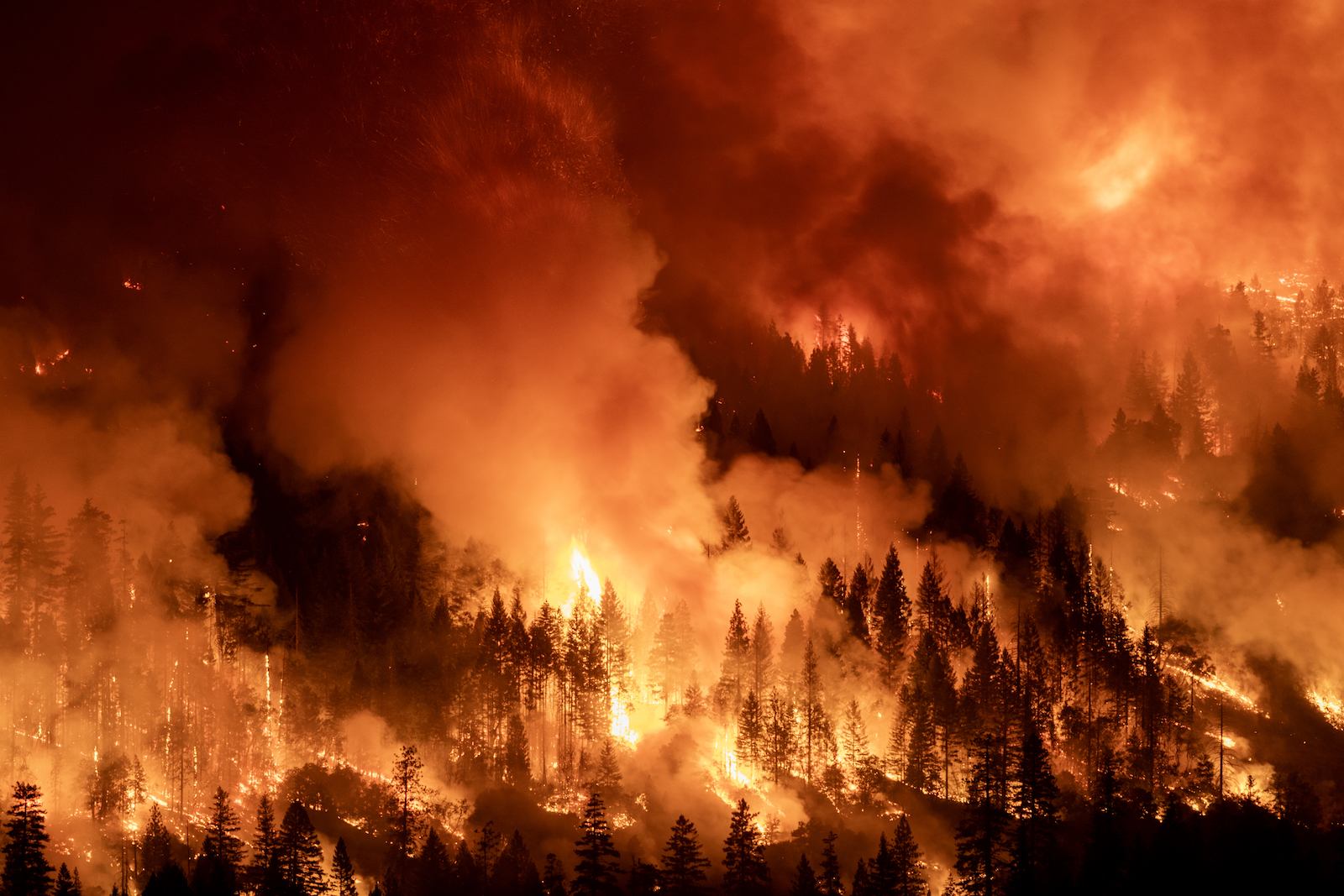
In the U.S., as with other mega-emitters, such a system overhaul has yet to transpire. The Biden administration has poured millions into everything from solar and wind development to the more controversial carbon capture technology, and yet, fossil fuel development continued apace, defying, it would seem, traditional economic logic. Why?
“The first place to look would be the base, not the superstructure,” Carton and Malm write in the introduction to the second part of their book. Here, the authors reference a classic Marxist concept that divides society into two parts: the means of production (the economy, in other words) and the relationships and ideas that follow from that system (i.e. culture, institutions, ideology). Located in the economic “base” are the investments that financial institutions and oil and gas companies have made in fossil fuel infrastructure, sunk costs that would result in massive profit losses if a speedy shift toward renewables were to occur. The logic of overshoot thus is born from an economic system deeply invested in fossil fuels — in pipelines mid-completion, in liquefied gas terminals only just coming online, in deep-water oil fields that have not run out.
This is perhaps the greatest takeaway of the book, that the prospect of “stranded assets,” or fossil fuel projects rendered unprofitable before the end of their expected economic lives, are the primary force holding the world back from beating climate change.
Carton and Malm argue that stranded assets are a typical feature of capitalism, since technological innovation often drives modes of production out of service, but fossil-fuel assets are a different beast entirely. Oil and gas are so deeply baked into every sector of the global economy that asset stranding on a massive scale would cause convulsions throughout the entire system, costing fossil fuel producers anywhere from $4 to $185 trillion dollars if warming were to be capped at 1.5 degrees, according to studies that Carton and Malm cite.
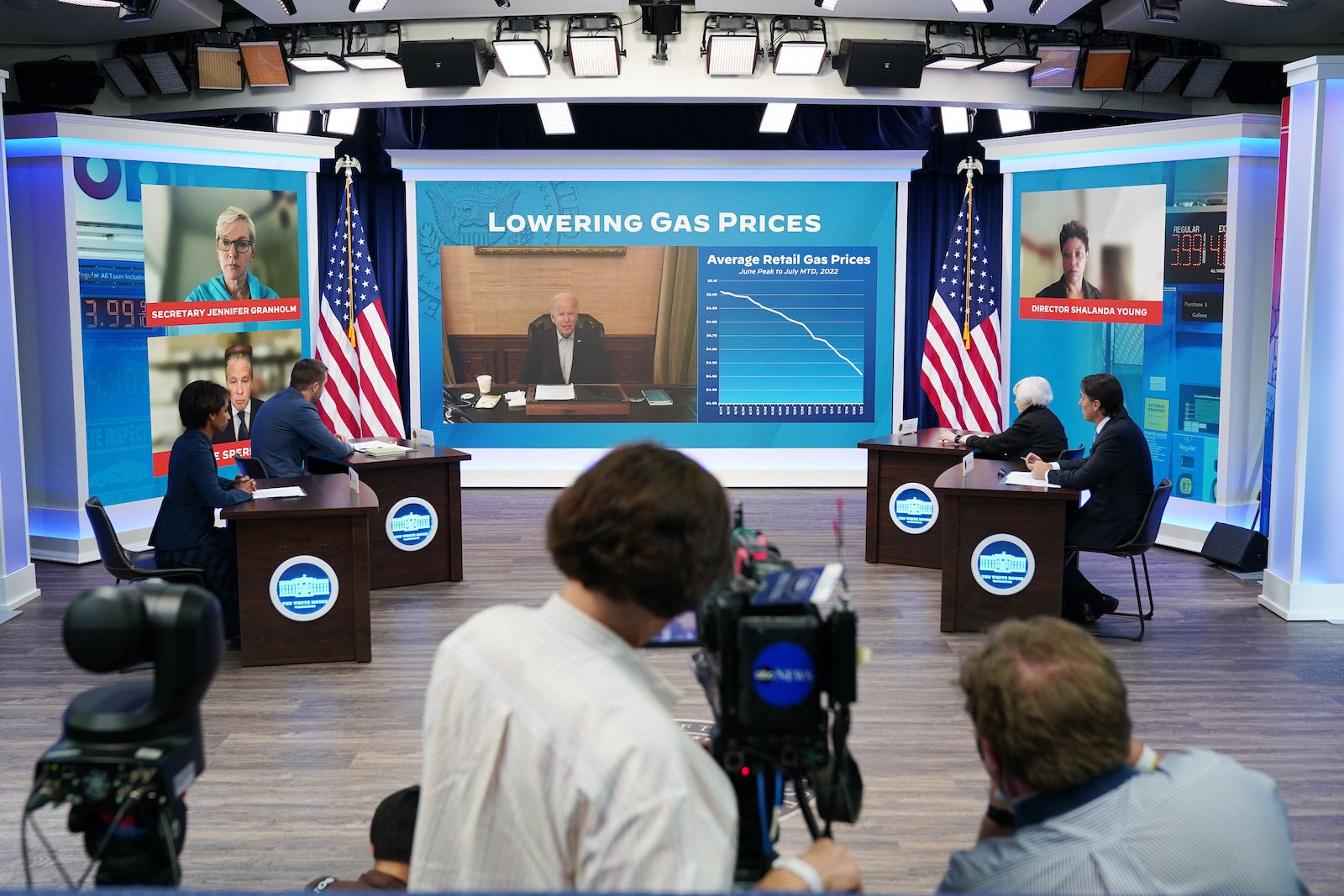
Mandel Ngan / AFP via Getty Images
Asset stranding may explain why current fossil fuel projects can’t be abandoned, but what about the new ones in the early stages of planning and development? Why are Shell and Total Energies not choosing to build solar farms instead? Here, the authors reach for some fairly thorny economic theory. To summarize: even if it costs less to develop, renewable energy will always be less profitable than fossil power, because it requires significantly less labor to produce, and labor (human labor, more specifically) is the key ingredient to extracting value from a commodity in a capitalist system.
Without something like a fracking ban or a carbon tax to make new pipelines or drill sites more cost prohibitive, we can probably expect the trend of the past several years — expanded fossil fuel use — to continue. Indeed, it is hard to imagine, in our fossil-driven world, the political success of an economic policy that drives up oil and gas prices. The recent election of Donald Trump, who ran on a platform of returning the country to the days of “drill, baby, drill”, should be sufficient evidence that such a policy would be hugely unpopular among the American electorate. It’s much easier, then, to kick the proverbial can down the road, to entrust human ingenuity with getting us out of this mess once it’s fully upon us, accepting that for many, it will by that point already be too late. That’s why we get an endless succession of integrated models ceaselessly computing new paths to 1.5 degrees. It’s also why the negotiations at COP29 in Azerbaijan, which officially ended on Friday, involved, like many U.N. conferences before it, more bureaucratic hand-wringing over climate finance than actual planning to cut fossil fuels.
Carton and Malm do not spend much time offering recommendations for how to break out of the overshoot cycle. What should not happen, they write, is a massive fossil fuel bailout where companies are paid billions to stop producing oil and gas — reparations, essentially, for destroying the planet.
They write of one inspiring example that recently occurred in Latin America: the newly elected leftist president of Colombia, Gustavo Petro, declared an end to oil and gas exploration and pledged to have zero extraction by 2034.
“We are convinced that strong investment in tourism, given the beauty of the country, and the capacity and potential that the country has to generate clean energy, could, in the short term, perfectly fill the void left by fossil fuels,” Petro declared at the World Economic Forum in Davos last year.
Tellingly, Petro did not spring this news on his people after being elected. It was the platform he ran on, and a promise he has since begun delivering — a shift in culture, in the superstructure, divorced from the economic base. This is what Carton and Malm leave the reader with, a sense that confronting the climate crisis will not come from policymakers beholden to fossil fuel giants and their trillions in assets, but from ordinary people, and their collective desire to shove the world toward real, lasting change.

